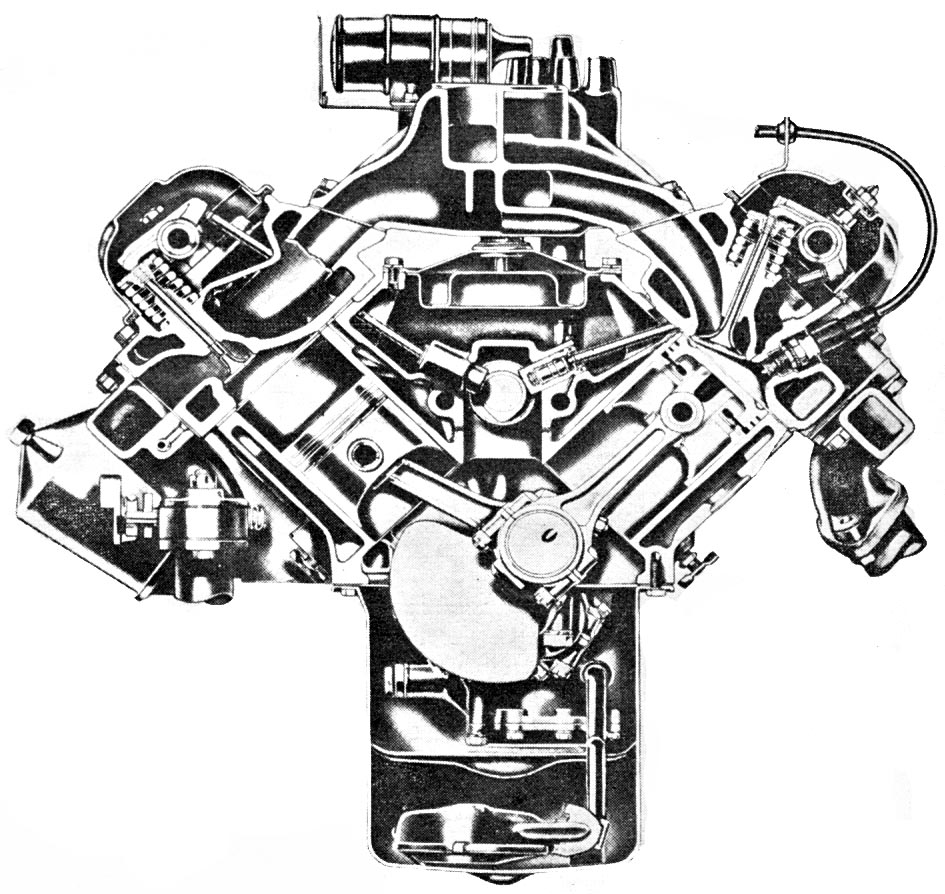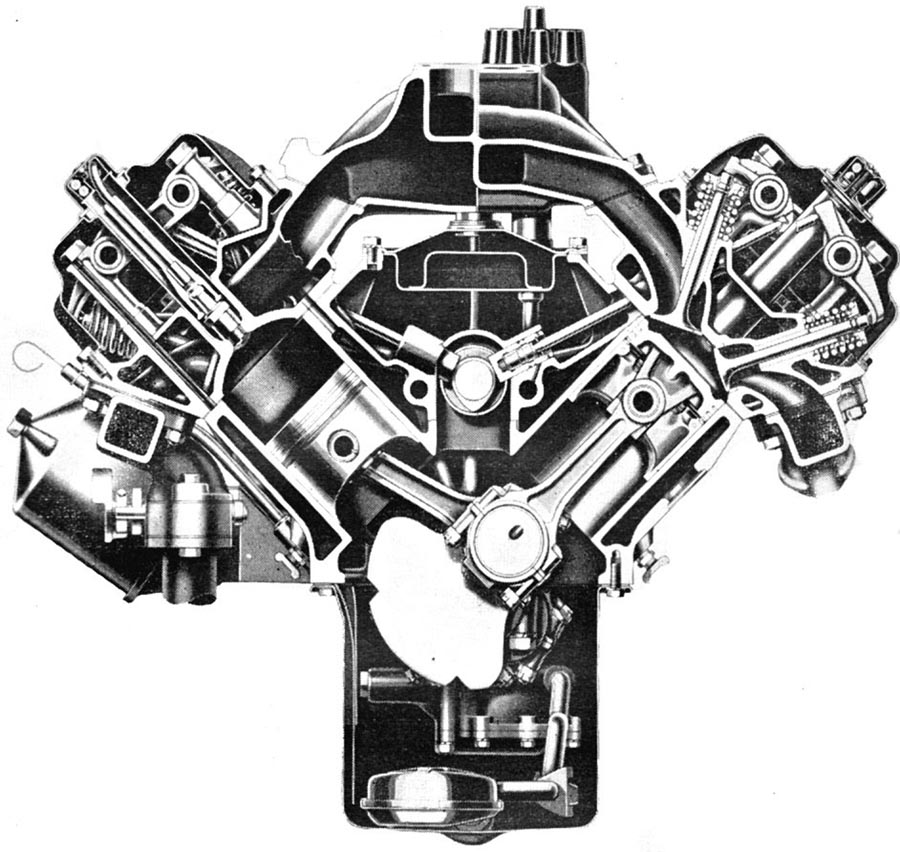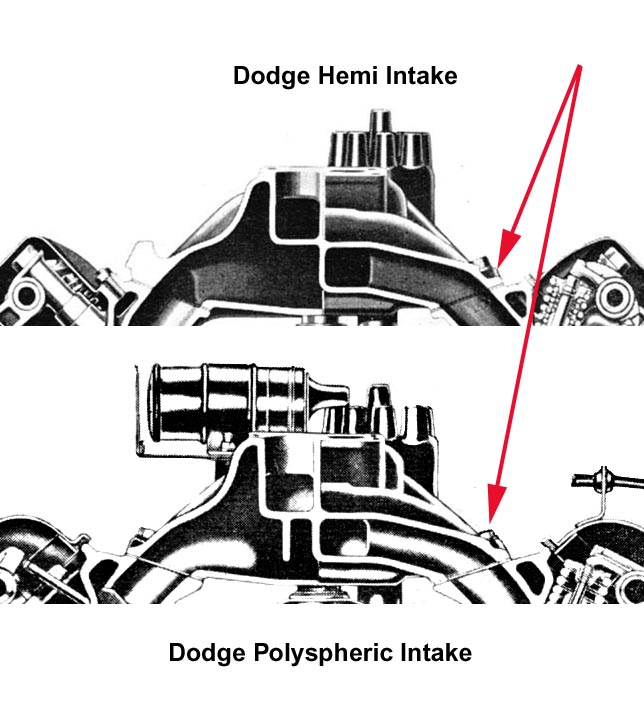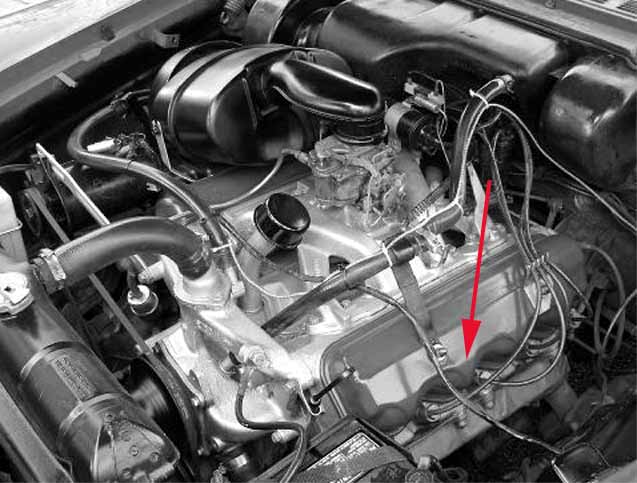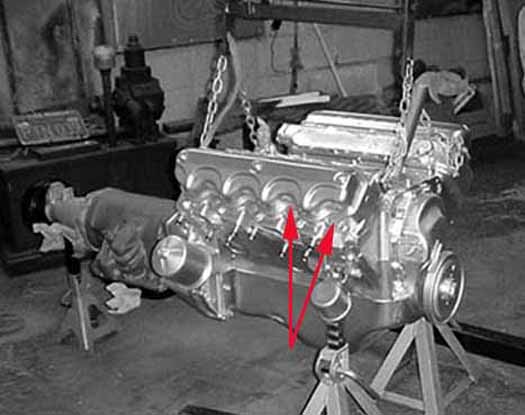To address the cost, complexity, and weight issues that were hallmarks of the Hemi design, Chrysler substituted a polyspherical-shaped combustion chamber, with valves activated by a single rocker shaft. The shaft was centered between the valves and actuated intakes and exhausts on either side. I was not a wedge chamber with inline valves.
While it was not quite the full hemisphere chamber of the Hemi, it still had a cast, but rounded, circular combustion area that could be used with that single rocker arm. To take advantage of this head design, Chrysler engineers put the valves in a diagonal arrangement, with intake valves on the top side of the rocker arm and the exhaust valves on the bottom side. (See diagram at right).
The intake was canted toward the carburetor like the Hemi, but not as radically, while the exhaust stood fairly upright. The head design allowed good placement of the spark plug inside the chamber and easy access on the outside by owners and service technicians. As such, the bottom of the new engine’s valve covers were uniquely scalloped around the exhaust valve spring. The “Poly” engines use the same hydraulic lifters and came with a two-barrel carburetor, as standard equipment. Later, Some would use their sister Hemi’s 4-barrel unit.
The poly cylinder head was introduced with the ’55 Chrysler Windsor in a 301-inch displacement offering 188 hp to buyers as an option to the higher-level Chryslers with the Hemi. That same year, not to be outdone, Dodge offered a version on their newly released Red Ram block. The only branch of the family during the 1950s without its own poly was DeSoto, which used Dodge polys for its lesser models.
Both these designs allowed the new head to replace the Hemi head with no changes – in fact, even the intake manifolds from the sister engine could be used. Thus the polyspheric engines were non-hemi-headed versions of their respective blocks. So The ’55-58 Chrysler and Dodge polysphere engines were “semi-Hemi” in another way. They were actually completely Hemi from the waist down, i.e., a 270, 315, 325, 331, or 354 Poly was a Hemi with poly pistons and heads.
The only reason for the head was to reduce manufacturing, maintenance, and repair costs. The biggest cost-saving factor for the polyspheric head engine was the single-rocker-shaft design. The whole head was lighter and smaller than their massive Hemi brothers. Within the corporation, flagship Chrysler had the most powerful versions of the poly design – but most of that extra boost came from the larger engine block size.
Polys continued in the other brands, with the lineage enlarged to 325 inches and 252 hp in ’58 Dodges. In 1959 and beyond, a Poly headed engine was still offered, but it was the 326 Dodge (one year) and the 318 Plymouth, which soldiered on until 1968.
The good thing about the Poly is that it can become the respective Hemi with piston and head changes – a boon to older Hemi builders who are finding the original blocks hard to find
1950s Dodge Poly Head Engines Image 2
The Dodge Poly head Block is almost exactly the same as the Dodge Hemi (below)
1950s Dodge Poly Head Engines Image 3
Note that the intake on the Hemi will exchange with that of the Poly – a big cost saver.
1950s Dodge Poly Head Engines Image 4
Note that the intakes are identical – the ports match and the bolt pattern is the same.
1950s Dodge Poly Head Engines Image 5
The Dodge Poly valve cover is different from the Chrysler (shown below), with different scallops in the valve covers. It bolts to the head with only two mid-cover bolts.



